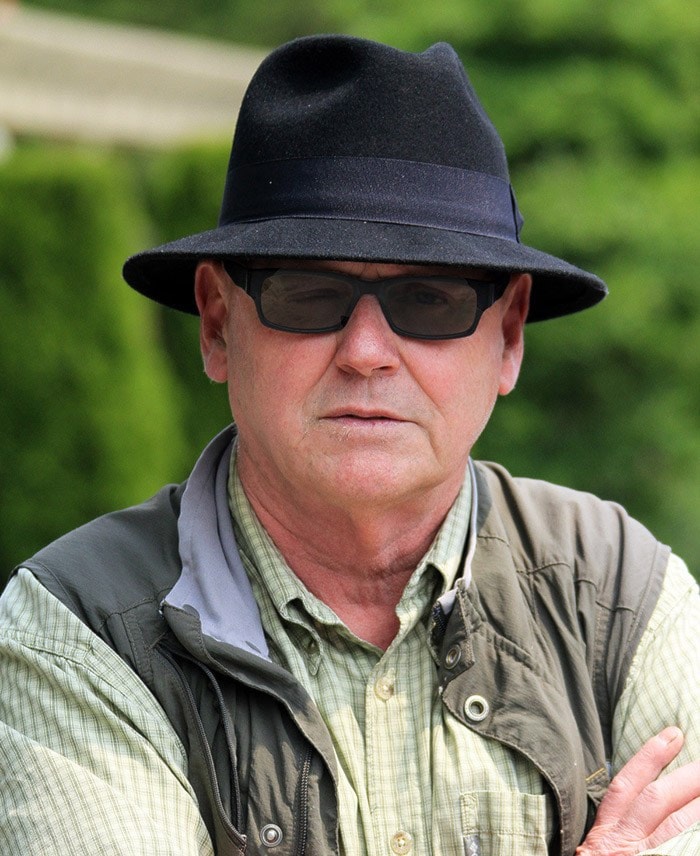Hell is a place where no one loves you – unknown.
I’m looking into a green belt between a Maple Ridge car lot and a nursery. It’s strewn with plastic bags, an armchair. Litter fills a ditch on the roadside.
The bush is one of many where homeless people camp. They’re under bridges, wharfs, and the overhead ramp to the Golden Ears Bridge. “They’re everywhere,” a man at Cliff Avenue told me.
Far from the town core, “some snare small animals for food.”
A 2014 survey noted 84 in Maple Ridge and Pitt Meadows.
The homeless say it’s higher and growing. They know the invisible ones. I’m trying to meet some before Oct. 19th.
Suddenly, a cyclist speeds toward the greenbelt path.
“Hello,” I shout.
He brakes, backs up.
“Thanks for stopping,” I say. “Can I talk to you?”
His name’s Jason.
“Sure,” he says.
“Are you going to vote?” I ask.
“Have the identification?”
“No ID,” he says.
I tell him there’s a Letter of Confirmation of Residence that makes voting easier this time.
An administrator – from a hostel, a residence like the Caring Place, a soup kitchen like the one at Golden Ears United Church, a social service worker, outreach staff – can sign it. The only other thing he needs is something with his name on it – a government statement, prescription bottle, even a hospital wrist band.
“I like the dinner at the church,” says Jason. “It’s like a family. They ladies who serve food ask you how you’re doing. Thinking about it makes me feel like crying.”
The reverend signed several letters last Saturday, I tell him.
Another man carrying bags for recycling joins us.
“It’s my friend,” Jason says. “Andrew, we can vote.”
“Don’t have ID.”
“Doesn’t matter. Let’s do it, man. Let’s vote.”
Earlier, I’d walked along Katzie Slough under the ramp to Golden Ears Bridge. Last month volunteers took sacks of refuse from one section of the bush. Today, a man on a bike stopped to talk. He’s from Pitt Meadows.
“I know of seven homeless there.”
Later, I asked Jason about the number.
“On the low side,” he said. “I’d say 15.”
Finding the homeless in remote bushes has been hard. On 232nd Street, a heavily bushed area, local residents told me of campers. With more time, and someone they trust to introduce me, I would talk to them. I have neither.
Over three weeks, I’ve met many homeless at Cliff Avenue, thanks to caregivers like Brian Smeding, who introduced me at 10 p.m. one Sunday while he distributed sandwiches, and staff at the Caring Place and the church who introduced me at the door at dinner time and encouraged folks to sign letters.
On Tuesday, I attended an art show at the ACT – paintings, poetry created by the homeless. A young woman proudly displayed her work. Recently, she’d found shelter.
During Homeless Action Week, Oct. 11-17, local service providers ran a spa and health and wellness fair at the Caring Place. On Friday, food trucks in Memorial Peace Park will serve them. I’ll be there, remembering Chris Iverson, who died in August.
In 2011, he walked into the Elections Canada Office quoting section 52 (1) of the Local Government Act (1996), which reads, “a person is a resident of an area where a person lives and intends to return.”
“People don’t know this,” Chris told me then. “That’s why they don’t vote.”
His fight for the voiceless in society is a reason I accepted the role of community relations worker for the homeless.
That, and because there was no one else for the job.
